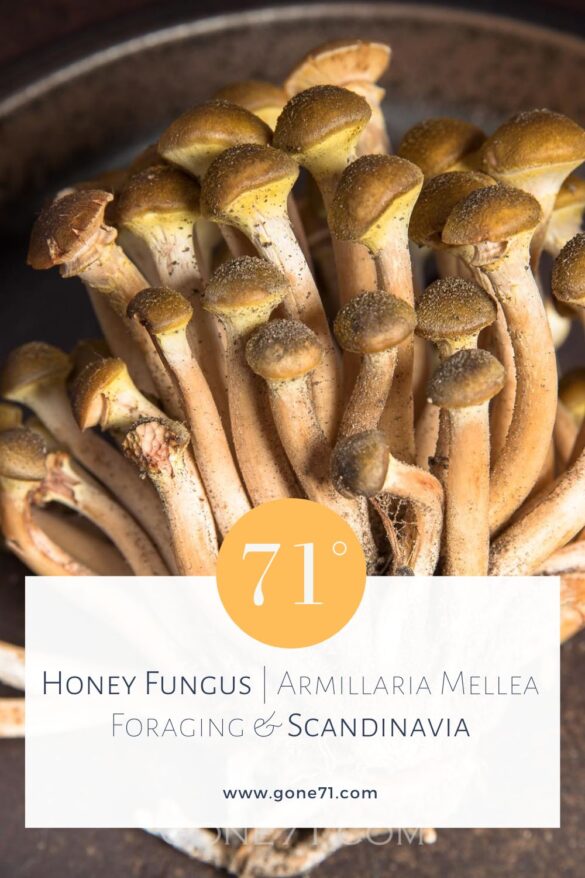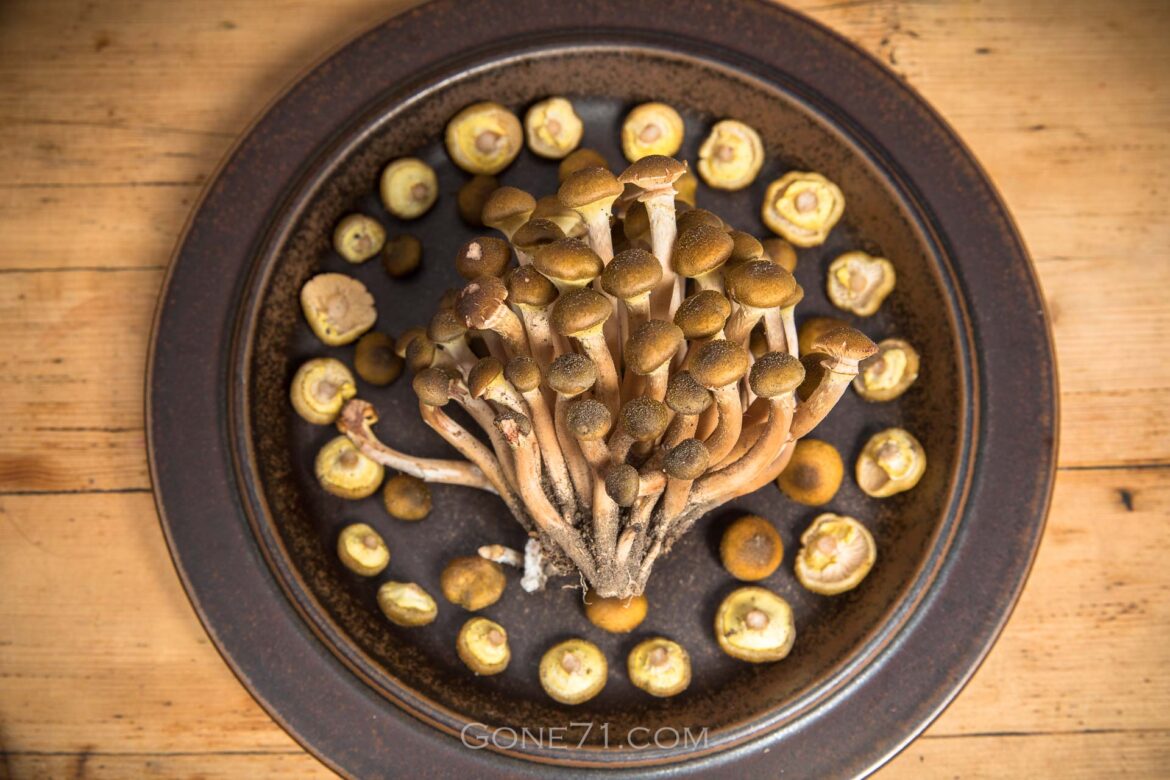nor.: Ekte honningsopp | swe.: Honungsskivling | fin.: Keltamesisieni | dt.: Honiggelber Halimasch, Goldgelber Halimasch
Especially in autumn the honey fungus can occur in abundance and just a day before I wrote this, I walked through a true honey-fungus forest with thousands of specimens. When they do occur, it’s really often in large quantities. These mushrooms live (parasitically) on wood and can populate entire forests.
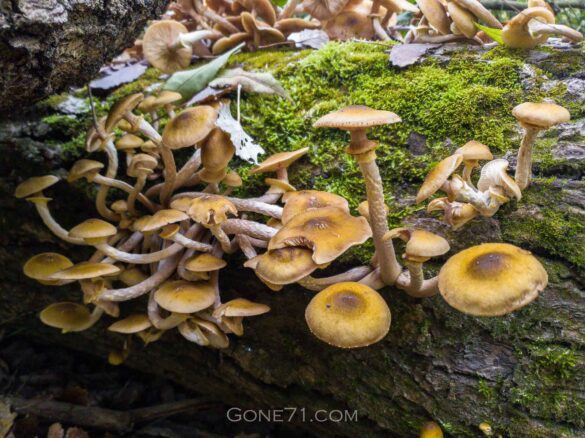
The most important question for most: edible or not?!
The short answer is: yes but! While it is considered edible on Wikipedia, the relevant mushroom literature has different information on it and many advise against eating it, as it is not tolerated by everyone. It can allegedly lead to intolerances and cause severe indisposition (note that morels can cause intolerance reactions too but they have no bad reputation!). However, this is the main reason for most not to eat them.
In my mycological social environment I was mostly advised against consumption too and one of my go to mushroom guides writes of “allergic reactions, fever-like conditions, diarrhoea or gastrointestinal complaints” as possible side effects. Unfortunately this is not very confidence-boosting if one would like to approach a new mushroom species from a culinary perspective.
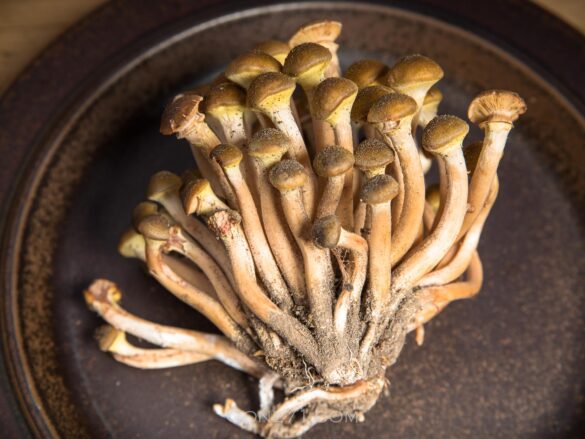
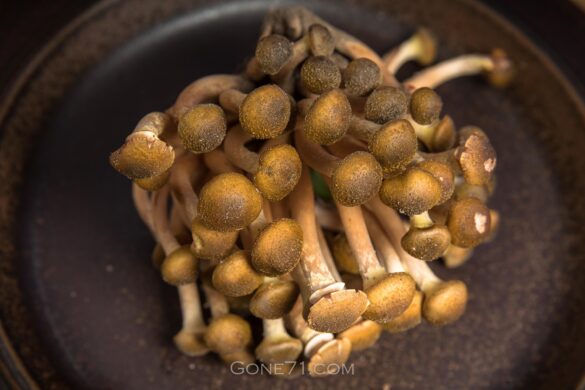
Only harvest mushrooms that you can identify with 100% certainty! The consequences can be life threatening if you are wrong. If you have the slightest doubt: do not eat the mushroom! This is not a mushroom guide! For correct identification consult a mushroom expert.
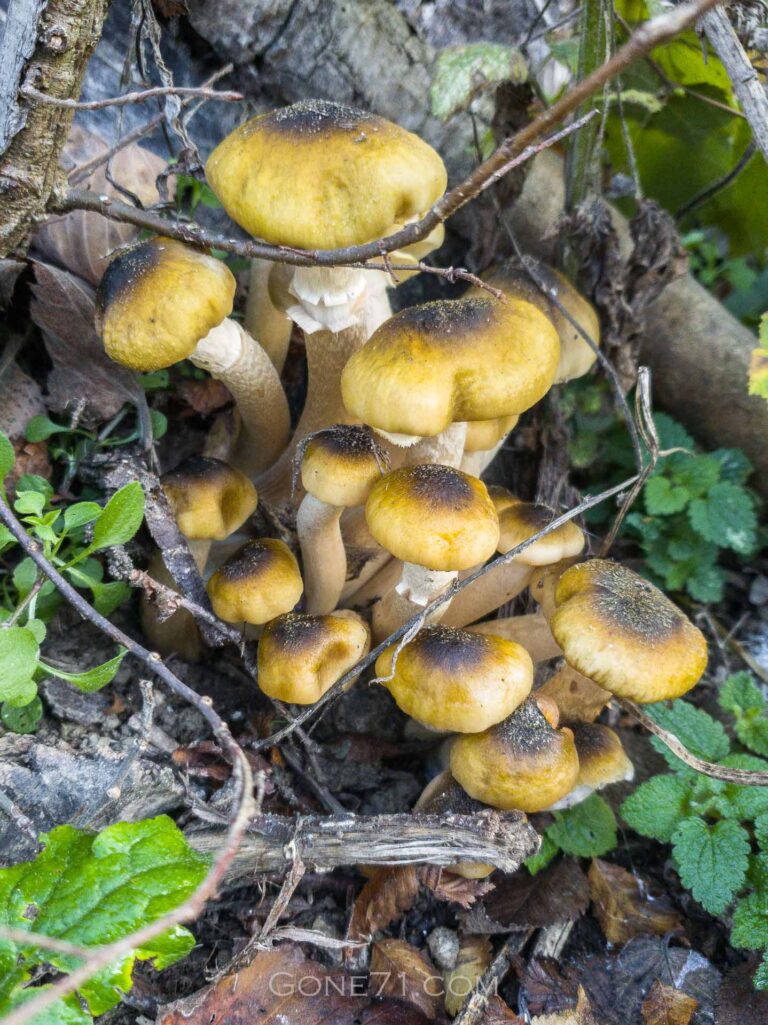
First approximations towards honey fungus
More than once I have taken specimens from the forest with the intention to try them – only to finally not dare again. Basically no big deal you might think and just mushroom-wise I have already tried a lot of species but with these mushrooms I was very strongly conditioned.
I don’t have to try everything and my personal standards are quite clear in this regard. However, reports from people who eat these mushrooms regularly without any problems and especially an abundance of good recipes for these mushrooms have made me curious. So in the end I could not resist to look a little deeper into the different types of honey-mushrooms. Not least because there is sometimes an almost endless supply in my area and I also find them visually very attractive.
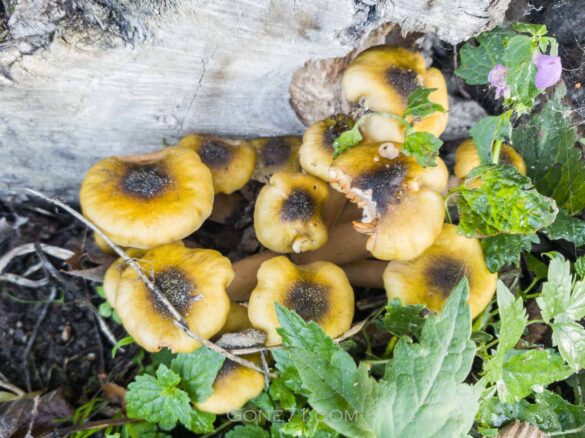
First culinary experiences
During my research I found a good recipe for pickled honey-mushrooms from the forager chef, which is supposedly especially suitable for people to whom honey mushrooms are a new culinary experience – I felt addressed.
After finding a really wonderful cluster of A. mellea, it was then time and I just tried the recipe with some adaptions. I can only say, really excellent! So convincing, in fact, that I was immediately sorry that I did not take more of these mushrooms home. The consistency was super crisp despite the cooking process and the small mushroom buttons in the right marinade are simply a treat for the palate. From intolerances no trace.
In retrospect, of course, I wonder what all the fuss was about, but in hindsight, it’s always easy.
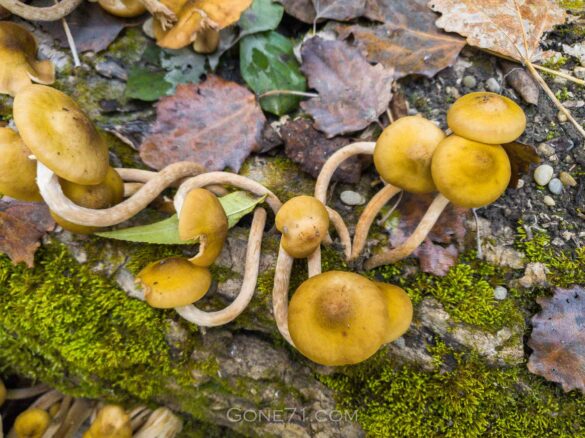
diameter: clusters of up to 20cm
months: July – October
colours: golden yellow
habitat: beech, pine, spruce
taste (raw): neutral, slightly bitter
consumption: cooked (poisonous raw)
One term – many specie: The different faces of honey fungus
The term “honey fungus” refers in fact to several species and not only to the honey-coloured A. mellea. In Europe there are at least 7 different types of the genus Armillaria. Besides the actual honey fungus or honey tuft A. mellea, the most common ones are the dark honey fungus; the bulbous honey fungus; the Nordic honey fungus, the ringless honey fungus and the mullet honey fungus.
A. mellea (honey fungus):
Cap is honey yellow, lemon yellow which distinguishes this fungus from other honey fungus species especially when young. In addition, it mainly inhabits deciduous trees which distinguishes it from the dark honey fungus (A. solidipes). The flesh is whitish light yellow. It has a white to yellowish ring. The lamellae are creamy white, light yellow, yellowish brown. This species is reported to be better tolerated than other honey fungus species known to us.
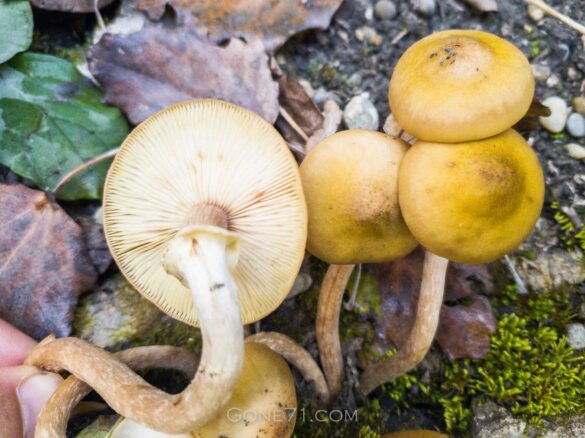
A. solidipes (dark honey fungus):
Also known as A. ostoyae. Grows on coniferous wood! Mostly on dead wood but also parasitic on diseased trees. Cap is reddish brown – often very variable in appearance in color, shape and habit. Whitish gills which may also be reddish brown when old. One of the most common honey fungus species.
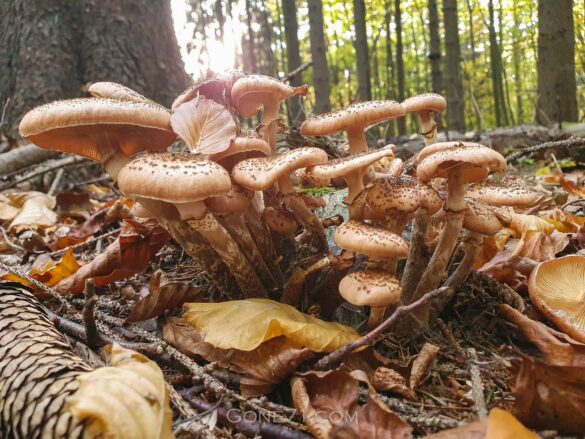
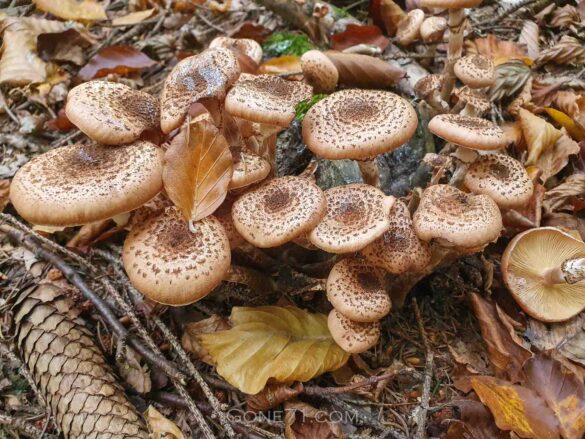
A. gallica (bulbous honey fungus):
Cap is brownish to reddish brown. Unlike the dark honey fungus, the underside of the ridge is golden yellow. Also, like A. mellea, it grows on hardwoods. To the latter it differs by much less yellow tones and more brown tones in coloration.
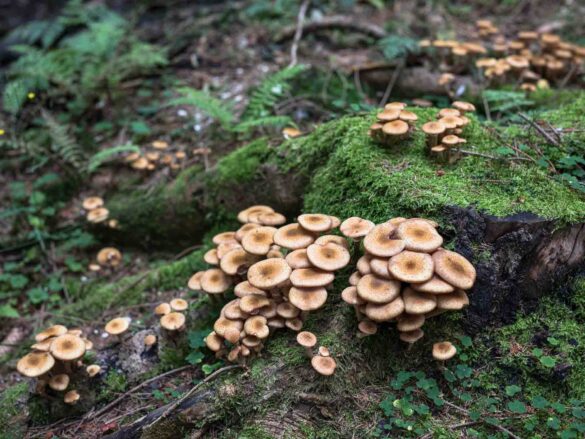
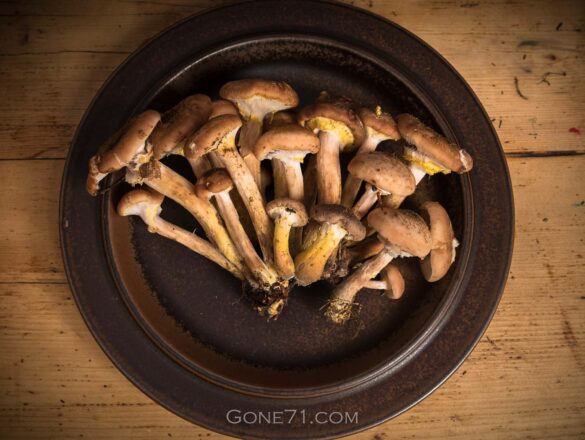
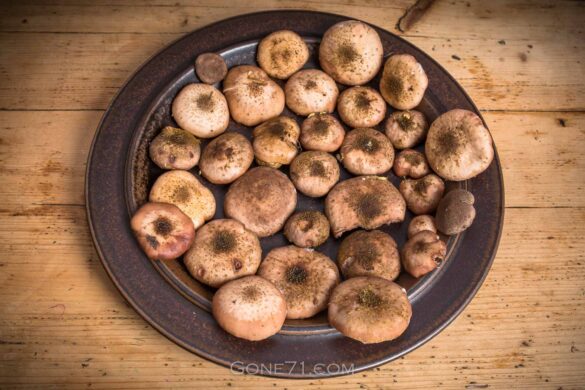
A. cepistipes (mullet honey fungus):
Resembles the classic honey fungus A. mellea, but has a thickened, mostly yellow stem base. Grows on deciduous wood.
A. borealis (Nordic honey fungus):
Found primarily in Scandinavia. The fruiting bodies are usually somewhat lighter, sometimes slightly pink. They like to grow higher up on the trunk of deciduous trees such as birch.
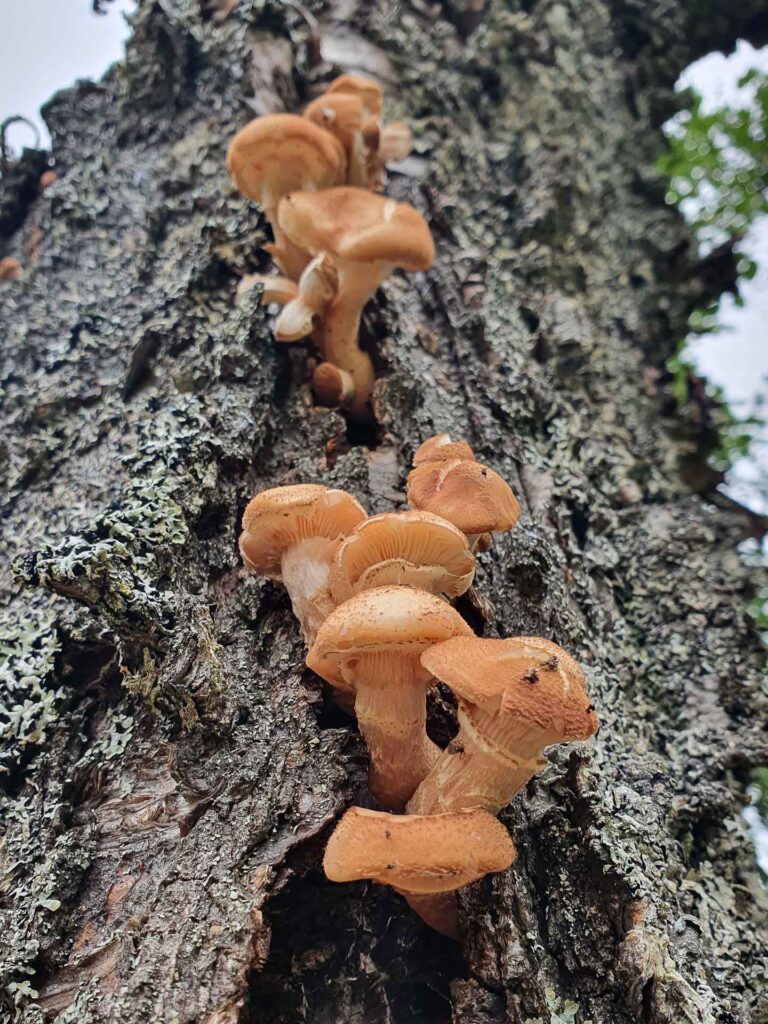
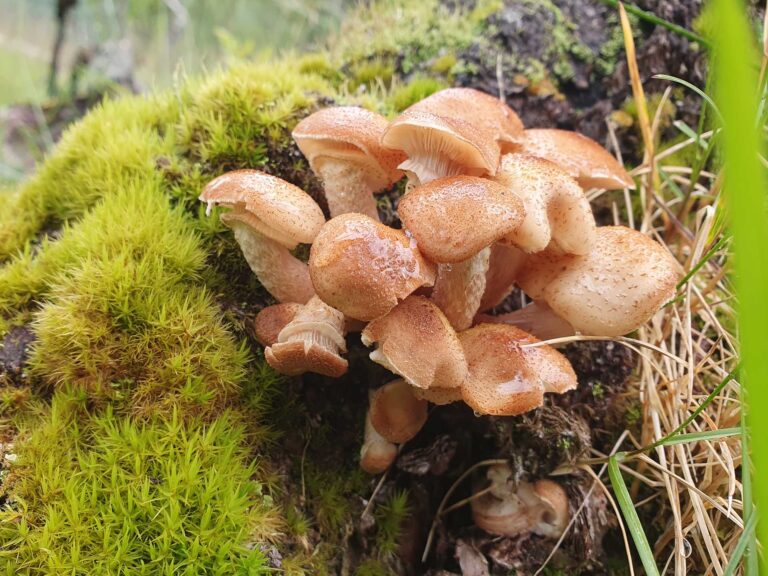
A. tabescens (ringless honey fungus):
As the name suggests, this species does not have a ring. Also inhabits deciduous trees, preferably oak or chestnut.
Confusing honey fungus with other mushrooms
A classic doppelganger is the shaggy scalycap also known as scaly Pholiota (Pholiota squarrosa) as well as the related golden scalycap (Pholiota aurivella) and other Pholiota spp.
It is distinguished by the coarser, clearly protruding and firmly attached scales and the brown spore powder, while the honey fungus known to us has a white spore powder.
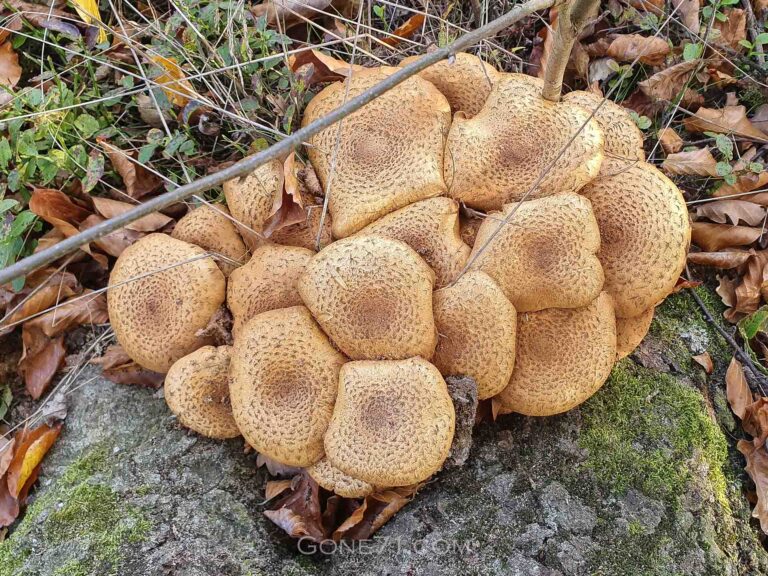


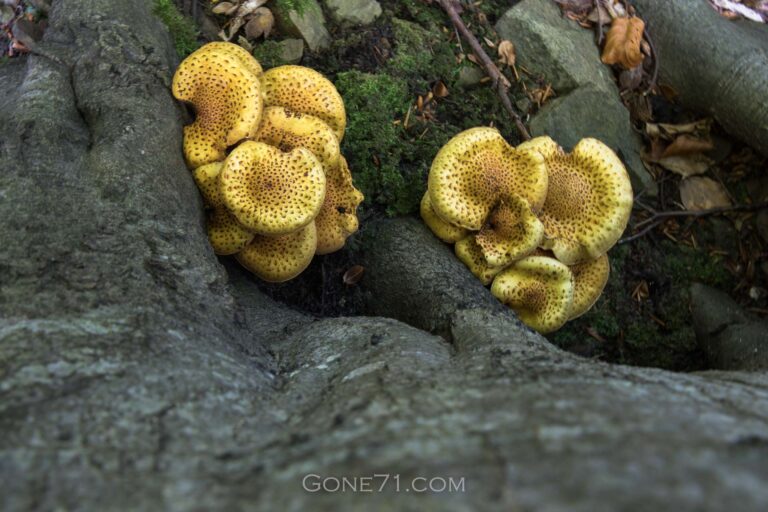
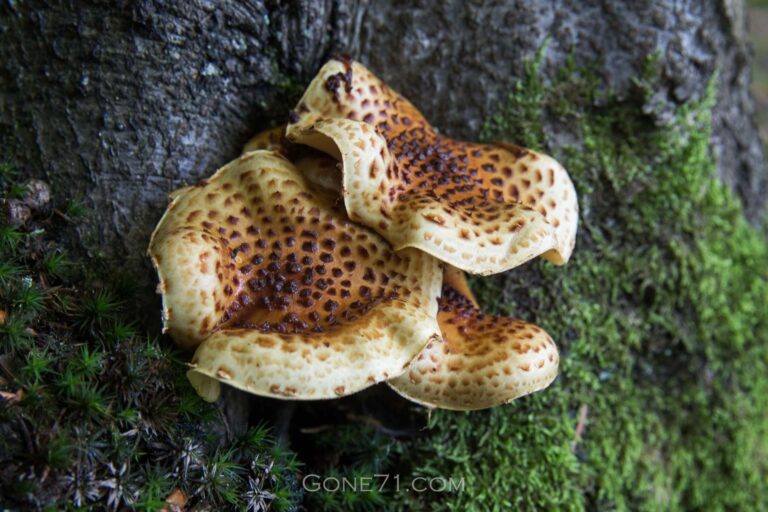
Fungi from the family of the very poisonous fibre caps (Inocybe) such as I. languinosa or I. hystrix are also considered potential fatal doubles.
So little and yet so big – honey fungus, the biggest living organism
A honey fungus is also the largest known living organism on this earth. In the Malheur National Forest, Oregon, a genetically uniform mycelial network the size of about 9 square kilometers (965 hectares) and a weight of about 7500 tons estimated from data of smaller Armillaria species was found. The Oregon mushroom is currently known to be the “largest mushroom on Earth” and is considered the largest living thing on Earth based on its areal extent. Its age is estimated at 1900-8650 years.
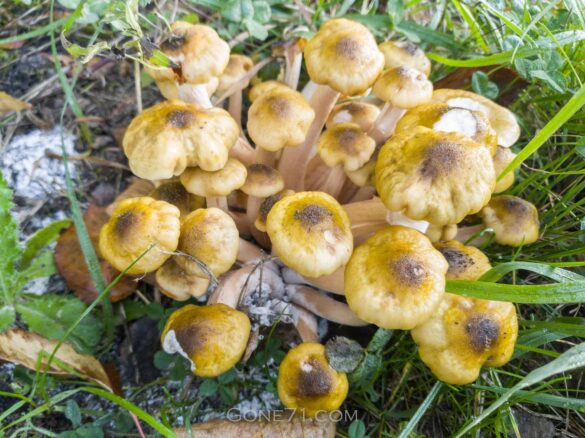
The honey fungus in the kitchen
We only use the young caps of the honey fungus as long as they are still sealed with the ring. Older specimens are said to be more likely to cause intolerance. Boiling is also said to make the mushrooms more tolerable. A. mellea is said to be the most tolerable of the species mentioned, whereas we could find hardly any information on the internet about the Nordic honey fungus.
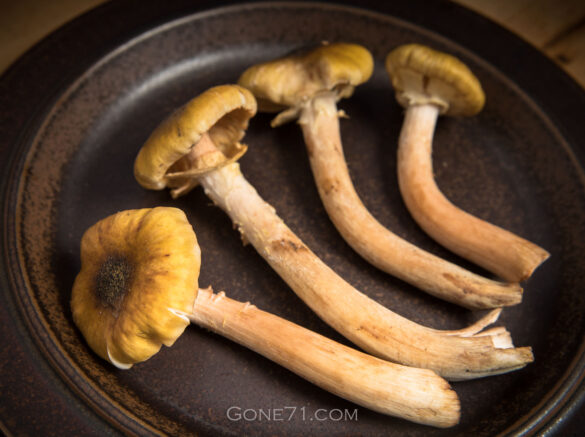
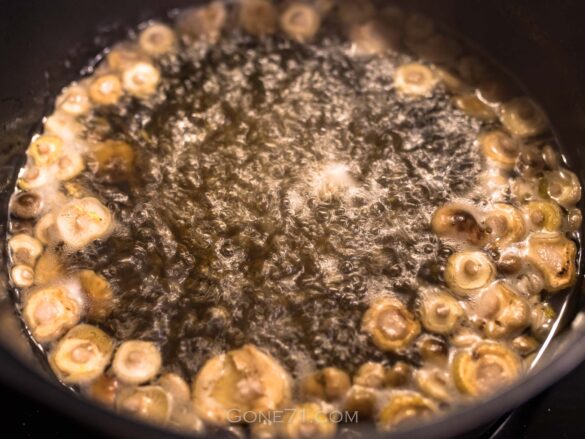
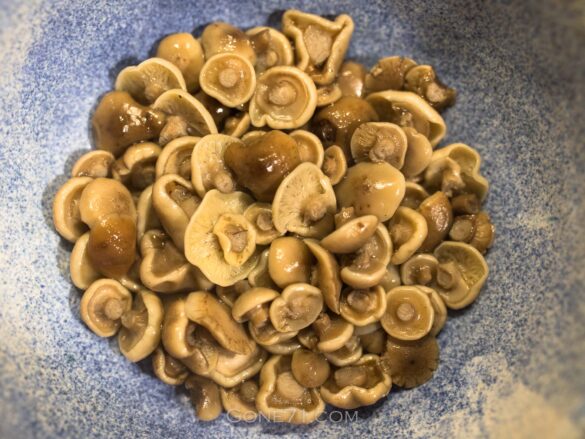
A simple preparation with big potential
We boiled the mushrooms in salted water for 15 minutes and then poured away the cooking water. For further processing, all possibilities are now open. Soups, sauces, vegetable pans or as still very appealing to us – marinated and pickled with olive oil, balsamico, honey and herbs.
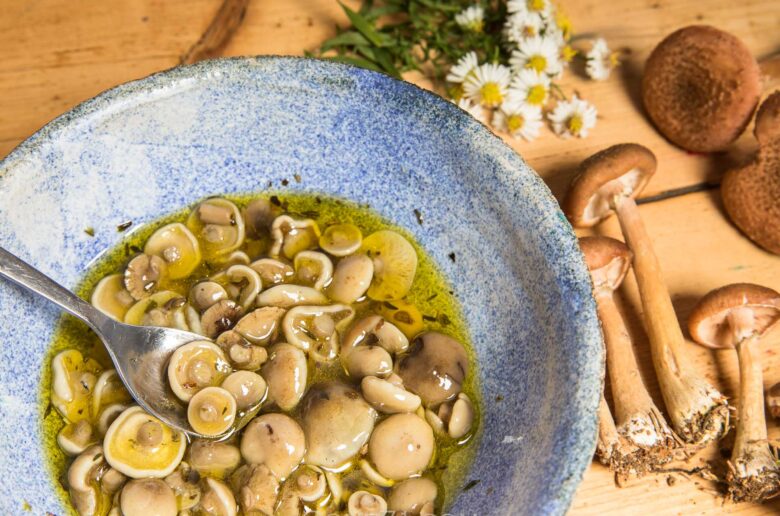
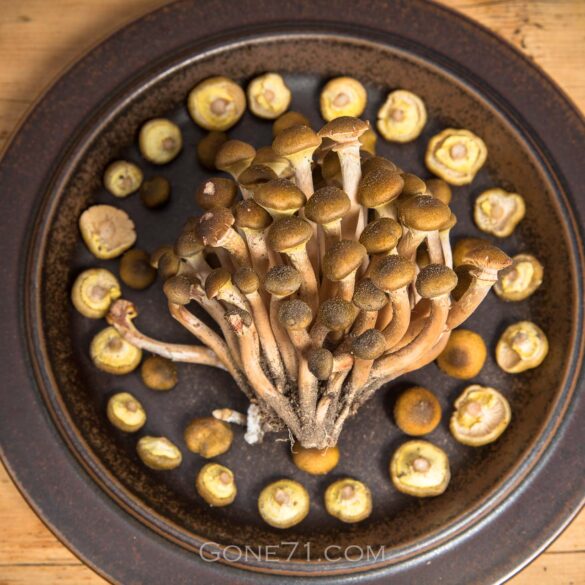
Pickled honey fungus (A. mellea)
Ingredients
- honey fungus - we recommend A. mellea
- garlic
- onion
- white balsamic vinegar
- Olive oil
- herbs de Provance or fresh herbs to taste and availability
- salt
- pepper
Instructions
- Separate the caps from the stems
- Heat water in a pot and salt
- Boil the mushroom caps for 15 minutes and then pour away the water.
- Drain the mushrooms well.
- Chop the onion and garlic into small pieces and sauté very briefly in olive oil.
- Add the mushrooms, salt, pepper and herbs and mix well.
- Put everything in a bowl and marinate with the vinegar and olive oil.
- The mushrooms should be covered with the marinade.
- Leave to marinate for at least 3 hours.
- Serve with fresh baguette.
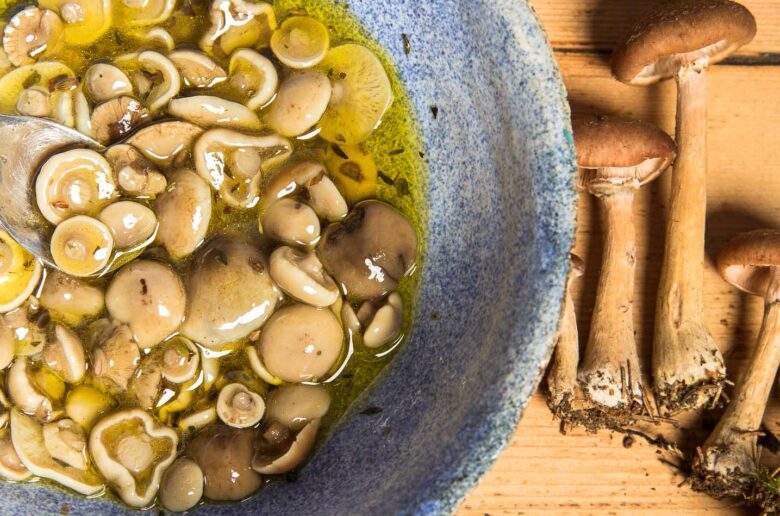
We have compiled this overview with the best of knowledge and belief, but do not claim to be complete and reserve the right to make errors.
Learn more about poisonous mushrooms and mushroom poisons here
↓↓↓
Find some inspiration in other mushroom recipes
↓↓↓
